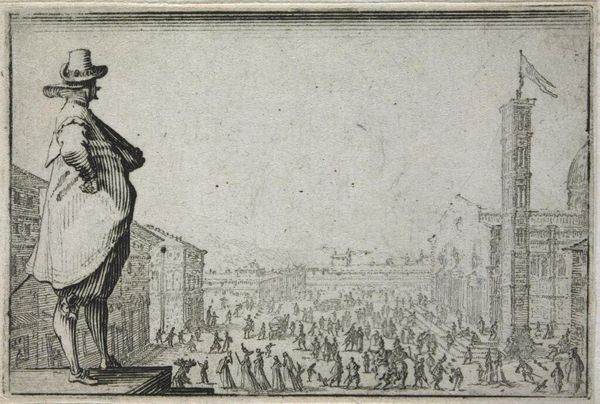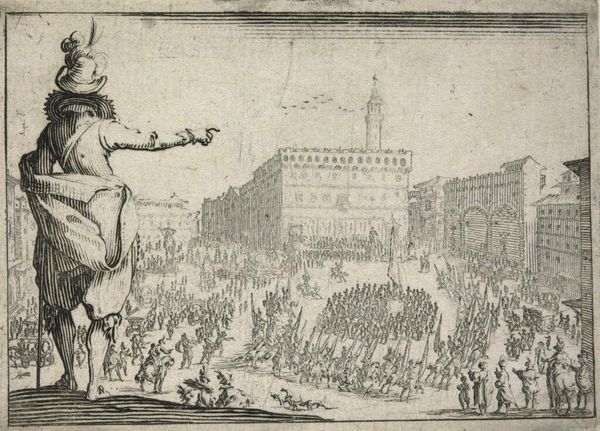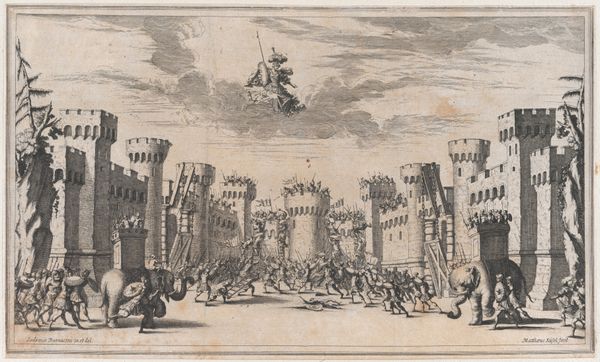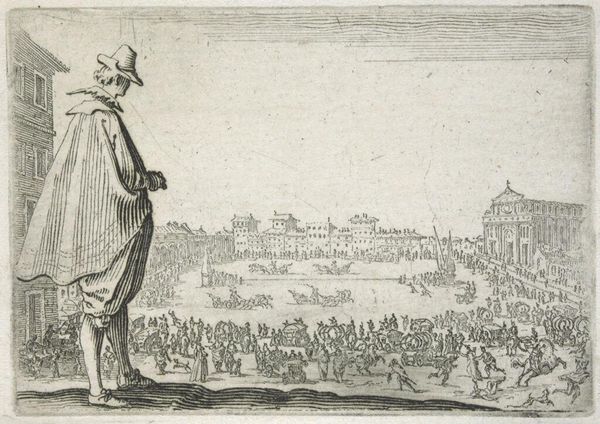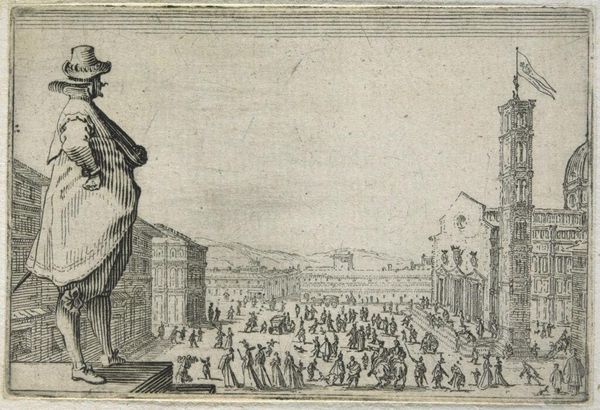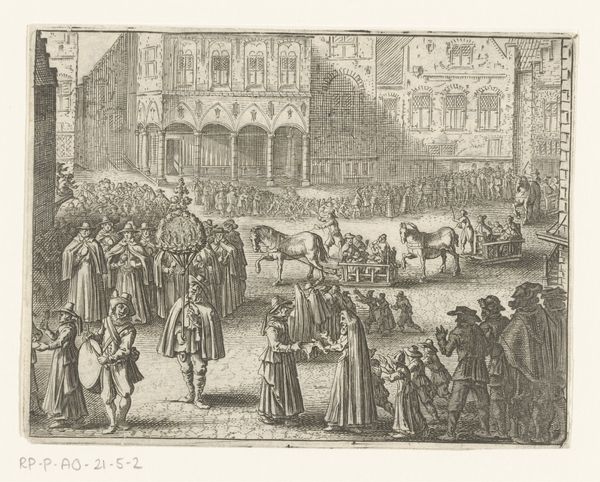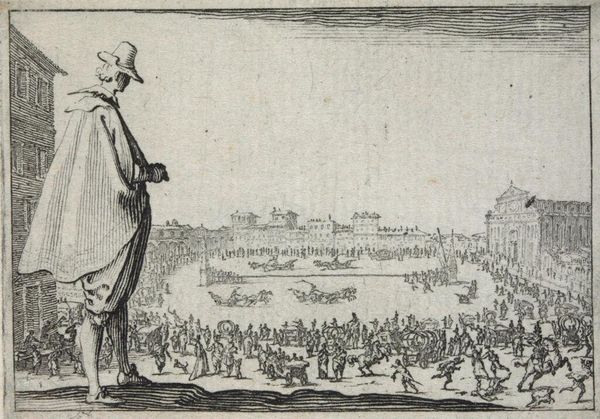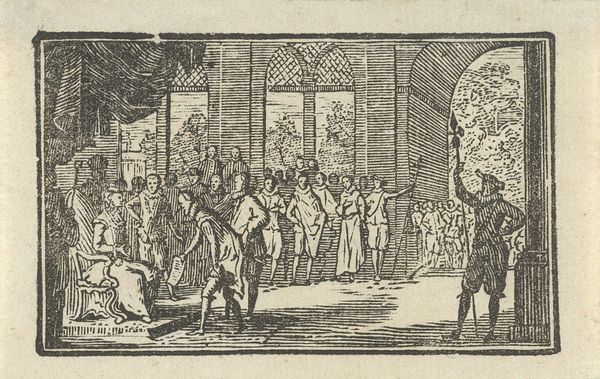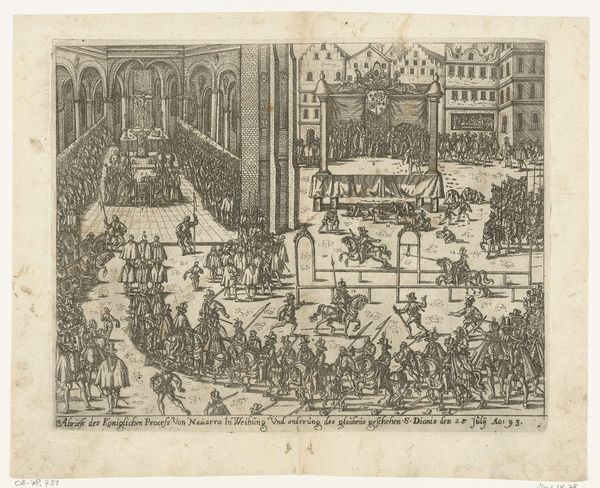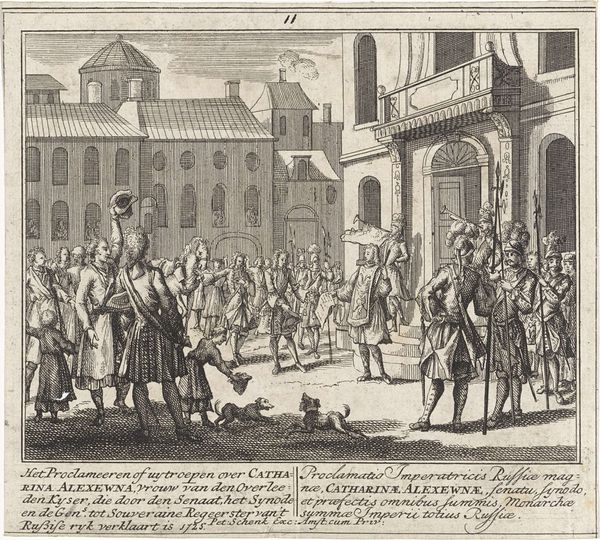
Reverse Copy of Une Fête sur la Place de la Signoria a Florence (A Festival on the Piazza della Signoria in Florence), from "Les Caprices" Series A, The Florence Set 1620 - 1700
0:00
0:00
drawing, print, engraving
#
drawing
# print
#
cityscape
#
genre-painting
#
history-painting
#
italian-renaissance
#
engraving
Dimensions: Sheet: 2 1/8 x 3 1/8 in. (5.4 x 8 cm)
Copyright: Public Domain
Curator: Here we have an engraving from around 1620-1700, a reverse copy of "Une Fête sur la Place de la Signoria a Florence," or "A Festival on the Piazza della Signoria in Florence" from "Les Caprices." Editor: Immediately, I’m struck by the bustling scene and the intricate linework that gives a sense of depth. There's such a detailed rendering of the crowd, and a statue-like figure that dominates the right foreground, acting almost like a proscenium arch. Curator: Indeed. This piece offers insight into the performative aspects of power in the Italian Renaissance. Festivals, like the one depicted, were carefully orchestrated events designed to reinforce social hierarchies. Consider the political message being broadcast to the Florentine populace through such grand displays. Editor: It's fascinating to think about the labor involved in producing this print, and distributing it. I wonder about the paper quality and the tools used by the engraver and how access to this image differed for people then, in relation to their class. Was this aimed at local distribution, or at tourists documenting a trip? Curator: Excellent questions! Prints such as these were often made for dissemination amongst elite circles, serving as both souvenirs and records of important civic events. The depiction of the Piazza della Signoria, the center of Florentine political life, speaks to the importance of place in shaping collective identity and social control. Editor: And that control is also embodied in the sheer volume of figures. You see how the anonymous artist used the linear perspective? That repetitive etching becomes its own kind of labor. But also the image hints at different sorts of labors, even though its supposedly only showing elites. Like, where did all these fabrics and flags originate? Who cleans up after the festivities? These questions linger, right? Curator: Absolutely. And while the image primarily focuses on the elite spectacle, your point about the implied labor is crucial. Even in representations of power, the mechanisms of its perpetuation are, if we look closely, always on display, both figuratively and materially. Editor: So, beyond a pretty depiction of Renaissance Florence, it's also kind of a layered social document, right? Highlighting wealth, pageantry, and, unintentionally, the material foundations on which that all rested. Curator: Precisely. It reminds us that every image, regardless of its intention, carries with it a wealth of historical and material context, ripe for exploration. Editor: This piece feels far richer now, appreciating the context beyond the aesthetic charm of a Renaissance festival scene.
Comments
No comments
Be the first to comment and join the conversation on the ultimate creative platform.


